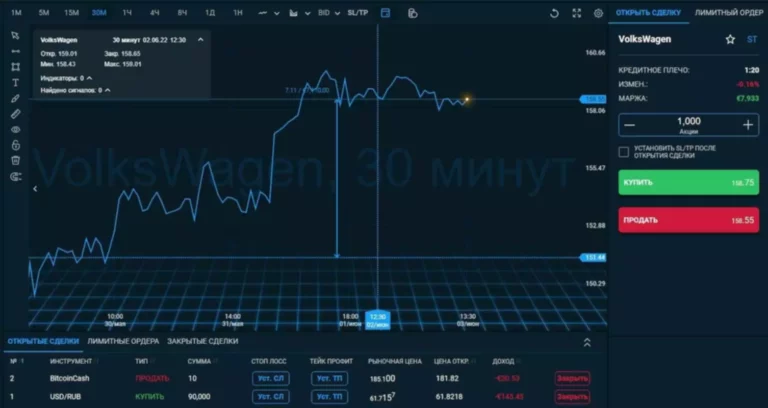The 5 largest mutual fund and change traded fund sponsors — out of 825 in all — accounted for fifty four per cent of the industry’s total belongings final 12 months, the ICI discovered, a document high and up from just 35 per cent in 2005. Passive funds accounted for 16 per cent of US inventory market capitalisation at the finish of 2021, surpassing the 14 per cent held by active funds, in accordance with the Investment Company Institute, an trade body. Active investments are funds run by investment managers who attempt to outperform an index over time, such as the S&P 500 or the Russell 2000. Passive investments are funds meant to match, not beat, the performance of an index. According to industry analysis, around 38% of the united states inventory market is passively invested, with inflows growing yearly.
Almost 81% of large-cap, lively U.S. equity funds underperformed their benchmarks. While ETFs have staked out a space for being low-cost index trackers, many ETFs are actively managed and observe numerous strategies. It entails a deeper analysis and the expertise to know when to pivot into or out of a specific inventory, bond, or asset. A portfolio supervisor usually oversees a team of analysts who take a glance at qualitative and quantitative factors and then makes use of established metrics and criteria to determine when and if to buy or promote. The Research Portal makes it straightforward to access Morningstar’s analysis and commentary from our skilled groups of manager, stock, and credit analysts.

Many advisors maintain your investments balanced and reduce taxable gains in varied ways. The investing information provided on this web page is for instructional purposes solely. NerdWallet, Inc. doesn’t supply advisory or brokerage services, nor does it suggest or advise traders to purchase or sell specific shares, securities or other investments. “If anything, every sell-off accelerates the rotation to passive. Investors promote actively managed funds first, while ETFs and index funds benefit from the mechanic demand of target-date funds,” stated Deluard. “By default, all American financial savings are now invested in TDFs and rolled over into index funds.
A New Take On The Lively Vs Passive Investing Debate
If both returned 5% annually for 10 years, that lower-cost 0.08% fund would be price about $16,165, whereas the zero.76% fund could be worth about $15,a hundred and fifty, or about $1,015 much less. And the difference would only compound over time, with the lower-cost fund price about $3,187 more after 20 years. Morgan Stanley Wealth Management is the trade name of Morgan Stanley Smith Barney LLC, a registered broker-dealer in the United States. This material has been prepared for informational purposes only and is not a proposal to buy or promote or a solicitation of any provide to buy or sell any safety or different monetary instrument or to participate in any trading technique. Past performance isn’t essentially a information to future performance. Active/Passive Barometer report analyzes the performance of nearly 8,338 unique funds in their respective Morningstar categories, particularly success rates, annualized extra returns, and more.
- The variety of ETFs obtainable to US buyers jumped by 398 in 2021, with 457 debuting — more than double the previous report of 197 set in 2015 — and simply fifty nine were liquidated or merged.
- Actively managed domestic equity mutual funds have suffered internet outflows yearly since 2005, at the identical time as their passive peers have had inflows every year bar 2020 and 2021.
- So is the world’s largest asset supervisor, BlackRock Inc., which is paring back its active-equities group.
- Active investing requires analyzing an investment for value changes and returns.
- These dangers embrace political and financial uncertainties of overseas international locations as nicely as the chance of forex fluctuations.
Other corporations specializing in energetic administration, like Fidelity and Franklin Resources, each of which have seen traders go away, are also slimming down. Still others are working to develop funds that mix energetic and passive management, just like the so-called smart-beta funds that monitor is active investing risky teams of securities primarily based on components similar to valuation, momentum and profitability. Hedge funds, which cost significantly higher fees than mutual funds, are in the identical boat as different lively managers.
Disadvantages Of Passive Investing
The proportion of assets held by the numerous lots of of managers exterior the elite 25 has thus halved over the period. It’s been a slow construct for many years now,” said Kenneth Lamont, senior fund analyst for passive strategies at Morningstar. The indices chosen by Morgan Stanley Wealth Management to measure performance are representative of broad asset lessons. Morgan Stanley Wealth Management retains the proper to vary consultant indices at any time. International investing entails greater danger, as well as higher potential rewards compared to U.S. investing.
The 10 largest fund houses manage the bulk of passive assets, and writing in its 2022 Factbook, the ICI attributed this surge in industry concentration to the meteoric rise of these funds. Return and principal worth of investments will fluctuate and, when redeemed, may be worth more or less than their authentic cost. There is not any assure that past performance or information relating to return, volatility, type reliability and other attributes shall be predictive of future outcomes. Morgan Stanley Wealth Management is concerned in many businesses that may relate to companies, securities or devices mentioned on this material. One fund has an annual payment of 0.08%, and the opposite has an annual fee of 0.76%.
Investing in these companies can mean collecting passive revenue. … to incorporate the statistic into your presentation at any time. As a Premium consumer you get entry to the detailed supply references and background information about this statistic. By submitting my info, I comply with the privacy policy and to study extra about services and products from Bloomberg.
Premium Investing Services
Without that constant consideration, it’s straightforward for even probably the most meticulously designed actively managed portfolio to fall prey to risky market fluctuations and rack up short-term losses that may impact long-term objectives. Active investing is a method that involves frequent buying and selling usually with the aim of beating common index returns. It’s probably what you think of whenever you envision traders on Wall Street, though nowadays you are in a position to do it from the consolation of your smartphone using apps like Robinhood. Lamont lauded BlackRock’s determination last year to allow its largest purchasers to vote instantly, reducing the fund giant’s proxy power. However he added that “it appears we’re a good distance away from individual buyers choosing preferences”.
Rosenbluth was also relaxed in regards to the rise of index investing, arguing that its “many flavours”, corresponding to large cap, small cap and sectoral and magnificence biases meant passive funds “are not owning the identical assets”. In contrast, the variety of mutual funds has declined yearly since 2016. Stripping out money market funds, mutual funds have also seen web outflows of cash for all however one 12 months since 2015. Download the complete report now to understand the performance variation between active vs. passive investing and how these insights can affect your purchasers’ investment strategies.

This strategy requires a long-term mindset that disregards the market’s every day fluctuations. They are used for illustrative purposes solely and don’t symbolize the efficiency of any specific funding. Founded in 1993, The Motley Fool is a monetary companies company devoted to creating the world smarter, happier, and richer. The Motley Fool reaches millions of individuals every month by way of our premium investing options, free steerage and market evaluation on Fool.com, top-rated podcasts, and non-profit The Motley Fool Foundation. Moreover, it isn’t just the returns that matter, however risk-adjusted returns.
Exchange-traded funds, that are mutual funds that commerce on an change just like stocks, are another frequent car for passive investing. With actively managed U.S. inventory funds posting outflows in eleven out of the last 12 years, and an unbroken streak of inflows for passively managed U.S. inventory funds, belongings in index-tracking methods have caught up with these in energetic funds. A passive investor hardly ever buys particular person investments, preferring to hold an funding over a long period or buy shares of a mutual or exchange-traded fund. These traders are most likely to rely on fund managers to ensure the investments held in the funds are performing and expect them to exchange declining holdings. Investors with each energetic and passive holdings can use active portfolios to hedge against downswings in a passively managed portfolio throughout a bull market. For occasion, among municipal-bond funds, 95% of belongings are in energetic strategies.

An energetic investor is somebody who buys stocks or different investments regularly. These buyers search for and purchase investments which would possibly be performing or that they believe will carry out. If they maintain stocks that are not residing up to their standards, they promote them. While most flows go to just a handful of ETFs, the format has added competition for energetic managers, especially amongst buyers who find the potential tax advantages of the ETF structure appealing. Our latest U.S. fund flows report exhibits that at the finish of April, both passive and energetic U.S. fairness funds had a complete of about $4.3 trillion in assets, basically reaching asset parity.
These provide you with a ready-made portfolio of lots of of investments. Investors in passive funds are paying for pc and software program to maneuver cash, quite than a high-priced professional. So passive funds typically have decrease expense ratios, or the annual price to own a bit of the fund. Those lower costs are one other issue in the higher returns for passive buyers. Because it’s a set-it-and-forget-it method that only aims to match market performance, passive investing doesn’t require day by day consideration.
Active money management aims to beat the inventory market’s common returns and take full advantage of short-term price fluctuations. Given that over the lengthy run, passive investing generally presents larger returns with decrease prices, you would possibly marvel if energetic investing ever warrants anyplace in the average investor’s portfolio. While energetic investing tends to concentrate on particular person securities, passive methods usually involve buying shares of index funds or ETFs that aim to duplicate the performance of major market indexes, like the S&P 500 or Nasdaq Composite. You can buy shares of those funds in any brokerage account, or you’ll find a way to have a robo-advisor do it for you. Even energetic fund managers whose job is to outperform the market hardly ever do.

Combining the 2 can further diversify a portfolio and truly help manage general risk. Clients who have massive money positions could wish to actively look for alternatives to put cash into ETFs simply after the market has pulled back. Active investing, as its name implies, takes a hands-on approach and requires that someone act as a portfolio manager—whether that particular person is managing their own portfolio or professionally managing one.
They also say that each one the money pouring into indexes that treat good and unhealthy firms alike will distort costs, creating more alternatives for many who can spot bargains and avoid overpriced securities. The chart below https://www.xcritical.com/ shows that in 1998, large-blend funds composed about 34% of assets, with the passively managed portion of that group composing about 10%. Today, large-blend funds account for 44% of U.S. inventory fund assets, with the passively managed phase accounting for about 33%.